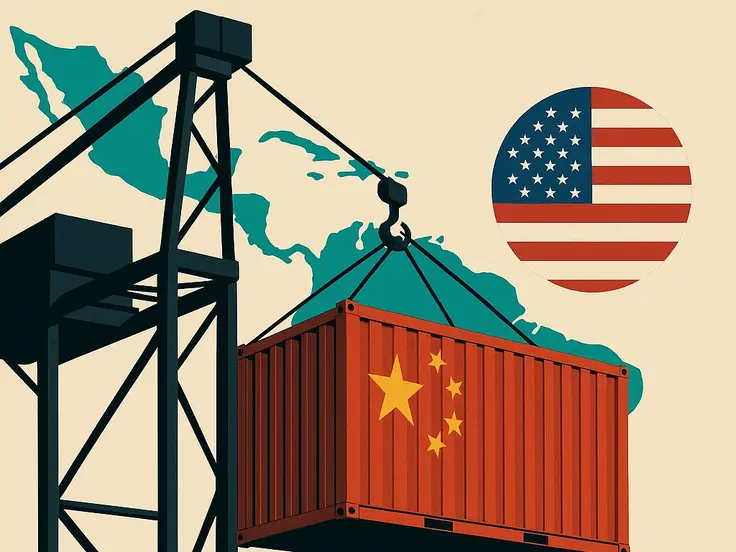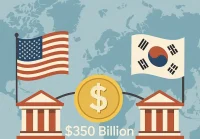In 2000, China’s footprint in Latin America was negligible. Today it’s South America’s largest trading partner and, in Brazil, a $180+ billion counterpart—more than double U.S. trade. Soy flows that once ran from U.S. farms now originate in Brazil. It’s not an accident; it’s strategy.
Trade was step one. Since 2005, China has added investment and policy finance—over $300 billion by various estimates—into ports, power grids, railways, lithium, copper, and oil. It’s a model tested in Africa: fewer speeches, more steel and concrete.
Ports, Rails, Power: The Map That Worries Washington
Beijing’s firms now own or operate stakes in dozens of Latin American ports. Overlay that with Chinese-built rail projects and utility holdings, and a web of leverage appears along key chokepoints. Peru’s Chinese‑financed megaport, for example, will reshape Pacific trade lanes. Add satellite tracking facilities in Patagonia, and the line between civilian logistics and strategic capability blurs.
For decades, the U.S. could nudge outcomes via the IMF/World Bank “carrot” and sanctions “stick.” That leverage is eroding. Many publics now see Washington as the heavier political hand compared to Beijing’s builders‑and‑bankers approach.
The Venezuela Moment
In 2017, Washington wielded sweeping sanctions expecting economic collapse and regime change in Venezuela. Instead, China extended lifelines—credit and oil purchases—that kept Caracas afloat. For the first time in a generation, U.S. will met a near‑peer challenge in its own hemisphere—and lost.
Why Latin America, Why Now
China’s WTO‑era boom required resources: iron, oil, soy, copper. Latin America had them, and exports surged. Consumers in the region benefited from cheaper manufactured goods; exporters basked in a commodities supercycle. From 2000 to 2024, bilateral trade jumped from ~$12 billion to $500+ billion.
But today’s push is about the next economy. EVs, renewables, semiconductors, and AI demand lithium and copper. The “Lithium Triangle” (Argentina, Bolivia, Chile) holds half the world’s reserves; Chile and Peru supply a third of global copper. Control the inputs, shape the industries.
From Trade To System: Loans, Yuan, And Belt & Road
Unlike U.S. private‑sector FDI, much Chinese capital arrives via state banks and SOEs aligned to policy goals. Two‑thirds of the region has signed onto the Belt and Road Initiative. Beijing has lent more than the World Bank, IDB, and CAF combined in certain periods—sometimes denominated in yuan or paid back in barrels of oil. That’s not just finance; it’s scaffolding for an alternative system.
Diplomacy follows money. Xi Jinping has visited Latin America more than recent U.S. presidents combined and routinely upgrades ties—from FTA expansions in Peru to a “China‑Brazil community” framework with Brasília. Regionally, China engages through CELAC, channeling funds while casting itself as a Global South partner against tariff “bullying.”
The Dependence Dilemma
Gains are real: jobs, tax revenue, modernized infrastructure. But concentration is risky. Chile sends ~40% of exports (mostly copper) to China. If Beijing throttled purchases, mines would shutter, wages would fall, and fiscal holes would widen. When a single buyer can put you into recession, economics becomes geopolitics.
Resource Control As Industrial Strategy
Beijing’s 2000s bet was oil (e.g., Venezuela’s repay‑in‑oil loans). Today it’s lithium and copper. Chinese SOEs have invested billions across Argentina, Bolivia, Chile, and Peru, including mines that alone account for ~2% of global copper output. Locking down inputs is how China intends to leap the middle‑income trap and dominate high‑tech supply chains before they mature.
Miss the window, and late entry becomes prohibitive—just as it was for Germany’s century‑long car ascent or America’s decades‑built aerospace sector.
Why Washington Is Behind
The U.S. bet that integrating China into global markets would liberalize its politics. Instead, it created a peer competitor—and opened the Western Hemisphere to state‑directed Chinese capital. With Beijing offering fast cash and fewer political strings, Washington’s traditional leverage has dulled. Countries now have options—and leverage.
Why Washington Is Behind
The U.S. wagered that economic integration would transform China politically. Instead, it empowered a global rival and weakened traditional influence across the Americas. As Beijing expands with state-backed capital and minimal conditions, Washington faces a new challenge — competition for loyalty, not ideology.
Post Jobs & Hire Global Strategy Talent →What This Means For Latin America
Leverage cuts both ways. Competition lets governments negotiate better terms, diversify financing, and extract local benefits. But overreliance risks economic coercion, environmental shortcuts, and debt rollover pressure. The smartest play is diversification: China for scale, the U.S./EU/Japan for standards and technology, plus regional value chains that capture more processing and manufacturing at home.
What This Means For The U.S.
- Strategic vulnerability: If China shapes flows of lithium and copper, it can pinch U.S. EVs, grids, and defense tech.
- Shrinking sway: Less alignment on migration, narcotics, and regional crises.
- A test of statecraft: The answer can’t just be “don’t take China’s money.” It has to be competitive financing, nearshoring, and credible, fast‑moving projects.
A Smarter U.S. Response (If It Wants To Compete)
1) Offer real alternatives. Scale a Western Hemisphere Infrastructure facility with blended finance (DFC, IDB, private funds) and fast approvals.
2) Buy regionally. Anchor offtake for critical minerals with transparent, enforceable ESG standards and finance midstream processing in‑region.
3) Build supply chains, not slogans. Incentivize battery, component, and grid manufacturing across Mexico, Brazil, and the Andes under clear rules of origin.
4) Modernize ports and power. Pair U.S. technology with local equity and labor requirements to deliver visible wins quickly.
5) Show up. Senior visits, permanent project teams, and consistent policy beat sporadic announcements.
FAQs
Is this “debt‑trap diplomacy”?
Evidence is mixed. Some projects have been restructured without asset seizures; others created fiscal stress. The risk isn’t a single “trap” so much as quiet dependence.
Can Latin America avoid overdependence?
Yes—by diversifying buyers, co‑financing with multiple partners, requiring local value‑add, and keeping transparency on contracts and collateral.
What about Taiwan recognition?
Beijing’s growing clout has reduced the number of Latin states recognizing Taipei. It’s a clear diplomatic signal of shifting loyalties.
Will this turn military?
Ports and space sites raise concerns, but the core contest is economic and technological. Escalation risks rise if crises (e.g., Venezuela) drag in great‑power backing.




